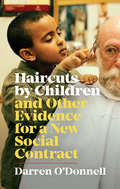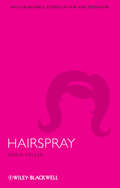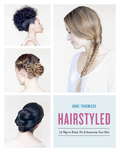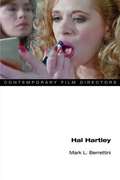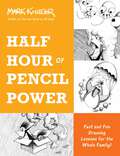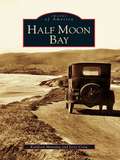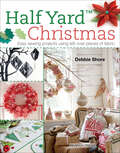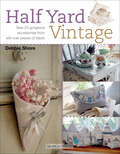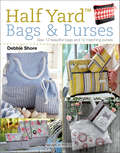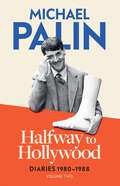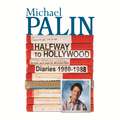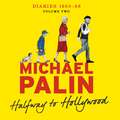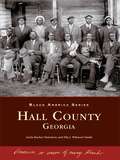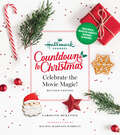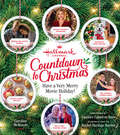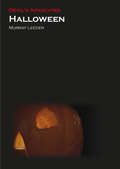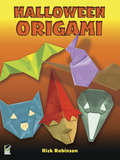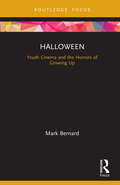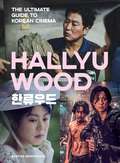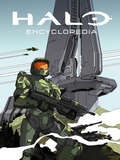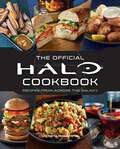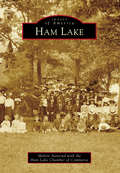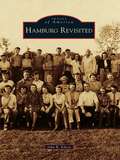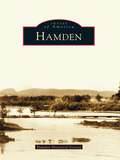- Table View
- List View
Haircuts by Children and Other Evidence for a New Social Contract (Exploded Views Ser.)
by Darren O'DonnellA cultural planner's immodest proposal: change how we think about children and we just might change the world. We live in an ‘adultitarian’ state, where the rules are based on very adult priori- ties and understandings of reality. Young people are disenfranchised and power- less; they understand they’re subject to an authoritarian regime, whether they buy into it or not. But their unique perspectives also offer incredible potential for social, cultural and economic innovation. Cultural planner and performance director Darren O’Donnell has been collaborating with children for years through his company, Mammalian Diving Reflex; their most well-known piece, Haircuts by Children (exactly what it sounds like) has been performed internationally. O’Donnell suggests that working with children in the cultural industries in a manner that maintains a large space for their participation can be understood as a pilot for a vision of a very different role for young people in the world – one that the UN Committee on the Rights of the Child considers a ‘new social contract.’ Haircuts by Children is a practical proposal for the inclusion of children in as many realms as possible, not only as an expression of their rights, but as a way to intervene in the world and to disrupt the stark economic inequalities perpetuated by the status quo. Deeply practical and wildly whimsical, Haircuts by Children might actually make total sense. ‘No other playwright working in Toronto right now has O’Donnell’s talent for synthesizing psychosocial, artistic and political random thoughts and reflections into compelling analyses ... The world (not to mention the theatre world) could use more of this, if only to get us talking and debating.’ – The Globe and Mail
Hairspray (Wiley-blackwell Series In Film And Television Ser. #12)
by Dana HellerBy reconsidering assumptions about mainstream popular culture and its revolutionary possibilities, author Dana Heller reveals that John Waters' popular 1988 film Hairspray is the director's most subversive movie. Represents the first scholarly work on any of film director John Waters' films Incorporates original interview material with the director Reveals meanings embedded in the film's narrative treatment of racial and sexual politics
Hairstyled
by Anne ThoumieuxSpruce up any outfit with your best accessory--your hair!You don't need to be a professional to get show-stopping hair. Hairstyled presents 75 deceptively simple techniques for creating your favorite high-fashion hairstyles. Dress up your everyday look with a ballerina bun or accessorize with a scarf bow. Turn heads at special occasions with the woven crown braid or a regal bouffant. Each style has how-to photographs that are easy to follow, and chapters dedicated to a variety of hair lengths and textures help you update your look whether you have a pixie cut or long, curly tresses. With product tips and countless ideas for accessorizing your 'do and inventive variations on classic styles, Hairstyled is your guide to getting gorgeous hair every day.
Hal Hartley (Contemporary Film Directors)
by Mark L. BerrettiniSince the late 1980s, Hal Hartley has challenged standards of realist narrative cinema with daring narrative constructions, character development, and the creation of an unconventional visual world. In this pioneering critical overview of his work and its cultural-historical context, Mark L. Berrettini discusses seven of Hartley's feature films, including The Unbelievable Truth, Trust, Simple Men, Amateur, Henry Fool, Fay Grim, and The Book of Life. Drawing on journalism, theories of representation, narrative and genre, and cinema history, Berrettini discusses the absurdist-comedic representation of serious themes in Hartley's films: impossible love, coincidence and human relations, extreme isolation, and the restrictions posed by gender norms. He looks at the films' consistently absurd tone and notes how these themes reappear within framing narratives that shift from the seemingly mundane in Hartley's earliest works to the vibrantly creative and fantastic in his later films. Employing close analysis and theories related to cinematic narrative and to realism, the book's critical appraisal of Hartley's films considers aspects of American independent cinema and postwar European cinema, antirealism, and minimalism. The volume concludes with a pair of in-depth interviews with the director from two distinct points in his career.
Half Hour of Pencil Power: Fast and Fun Drawing Lessons for the Whole Family!
by Mark KistlerTap into the powerfully positive impact of drawing for the whole family with 25 drawing sessions! In March 2020, Mark Kistler received a call that his son's school was going virtual for the remainder of the school year. He began holding daily livestreams, leading half hour drawing sessions for what became hundreds of thousands of kids over two months, giving families a much-needed break from the chaos of the pandemic. Now, Mark brings these stress-relieving, creative outlets to life in 25 original lessons, including:Space Kitty!Dino RideParachuting PenguinSinging SharkNinja Banana—and more!Harnessing the life inspiring and transformative power of the visual arts, Half Hour of Pencil Power brings together parents, educators, and the kids they care for with step-by-step drawing lessons, all of which can be done in a half hour or less. Drawing will help your kid have fun, decrease loneliness, build self-esteem, and increase creativity, and Pencil Power is accessible, imaginative, and oodles of fun for everyone. &“Mark Kistler has created a series of wonderful, rewarding and easy (even for me) drawing activities that can help children, teens, and families connect to their inner selves as well as to each other.&”--from the Foreword by Jeffrey Bernstein, PhD, author of 10 Days to a Less Defiant Child
Half Moon Bay
by Kathleen Manning Jerry CrowFirst dubbed San Benito and then "Spanishtown," Half Moon Bay is a coastside town with a long and intriguing story. Many know it for its lovely natural surroundings, quaint downtown architecture, and relaxed atmosphere, but not many people know that this town was the first to be established in San Mateo County as a result of 1840s land grants to early Spanish settlers. Isolated on the coast for a time, it became home to Mexican, Chilean, Italian, Portuguese, and other cultures after the 1850s, when roads finally reached over the mountains. During the 20th century, a wide variety of businesses thrived here, as people arrived by road, water, and even railroad. Farms, churches, schools, businesses, and homes sprang up, and the town modernized, though today's Half Moon Bay looks much like it did 100 years ago.
Half Yard Christmas: Easy Sewing Projects Using Left-Over Pieces of Fabric
by Debbie ShoreTurn fabric scraps into holiday treasures with this guide featuring more than 30 sewing projects by the creator of the Half Yard Sewing Club. In Half Yard Christmas, Debbie Shore shares charming holiday creations that are fun and easy to make. Best of all, each one requires only a half-yard of fabric! With six themed chapters—Rustic, Traditional, Contemporary, Monochrome, Scandinavian, and Kids—you can select your favorite Christmas style or mix and match throughout your home. These simple yet stylish projects include everything from stockings and Santa hats to fabric wreaths, ornaments, figurines, and more. Debbie&’s friendly guidance, and easy-to-follow photography make this guide ideal for beginners as well as more experienced sewers looking for quick and easy holiday projects.
Half Yard Vintage: Sew 23 Gorgeous Accessories from Left-Over Pieces of Fabric
by Debbie ShoreBring a touch of elegance to your home with this easy sewing guide featuring 23 vintage-style projects that only require a half-yard of fabric each. In Half Yard Vintage, Debbie Shore teaches you how to turn leftover fabric into beautiful accessories and home décor items. Featured projects include a lacy pillow cover, a bucket-style wash bag, and cones for displaying posies of dried flowers. You can elevate your afternoon tea with a tea cosy, made-to-measure tray cover, and a cake frill. Half Yard Vintage also includes vintage-style Christmas decorations, including stockings, an advent calendar, and a wreath. With Debbie&’s friendly advice and step-by-step instructions, vintage style has never looked better!
Half Yard™ Bags & Purses: Sew 12 Beautiful Bags and 12 Matching Purses
by Debbie ShoreBeginner-friendly patterns for twelve gorgeous bags and twelve matching purses from an Immediate Media British Craft Awards Sewing Designer of the Year. This fantastic new book from bestselling author Debbie Shore contains twenty-four projects: twelve bags and twelve matching purses. Choose from flowery patchwork totes, backpacks with faux leather detailing, clasp-top clutches, cute floral messenger bags, practical folder holders and a stylish business travel bag, all complete with a matching purse. Each purse is made in the same style and from the same fabric as its corresponding bag—mix and match the bags and purses or make yourself the pair.Each item requires no more than half a yard of outer fabric, plus all the necessary hardware, trimmings and lining. All the instructions you need are provided in Debbie’s clear, friendly style, along with inspiring, easy-to-follow photography, and any templates required are included at full size. There are also QR-coded video links, providing additional support and advice from Debbie.
Halfway To Hollywood: Diaries 1980-1988 (Volume Two)
by Michael PalinMichael Palin's bestselling diaries of the 1980s.After a live performance at the Hollywood Bowl, The Pythons made their last performance together in 1983 in the hugely successful MONTY PYTHON'S MEANING OF LIFE. Writing and acting in films and television then took over much of Michael's life, culminating in the smash hit A FISH CALLED WANDA (for which he won a BAFTA for Best Supporting Actor), and the first of his seven celebrated television journeys for the BBC. He co-produced, wrote and played the lead in THE MISSIONARY opposite Maggie Smith, who also appeared with him in A PRIVATE FUNCTION, written by Alan Bennett. Such was his fame in the US, he was enticed into once again hosting the enormously popular show Saturday Night Live, in one edition of which his mother makes a highly successful surprise guest appearance. He filmed several journeys for television and became chairman of the pressure group, Transport 2000. His family remains a constant as his and Helen's children enter their teens.
Halfway To Hollywood: Diaries 1980-1988 (Volume Two)
by Michael PalinMichael Palin's bestselling diaries of the 1980s.After a live performance at the Hollywood Bowl, The Pythons made their last performance together in 1983 in the hugely successful MONTY PYTHON'S MEANING OF LIFE. Writing and acting in films and television then took over much of Michael's life, culminating in the smash hit A FISH CALLED WANDA (for which he won a BAFTA for Best Supporting Actor), and the first of his seven celebrated television journeys for the BBC. He co-produced, wrote and played the lead in THE MISSIONARY opposite Maggie Smith, who also appeared with him in A PRIVATE FUNCTION, written by Alan Bennett. Such was his fame in the US, he was enticed into once again hosting the enormously popular show Saturday Night Live, in one edition of which his mother makes a highly successful surprise guest appearance. He filmed several journeys for television and became chairman of the pressure group, Transport 2000. His family remains a constant as his and Helen's children enter their teens.
Halfway To Hollywood: Diaries 1980-1988 (Volume Two)
by Michael PalinAfter a live performance at the Hollywood Bowl, The Pythons made their last performance together in 1983 in the hugely successful MONTY PYTHON'S MEANING OF LIFE. Writing and acting in films and television then took over much of Michael's life, culminating in the smash hit A FISH CALLED WANDA (for which he won a BAFTA for Best Supporting Actor), and the first of his seven celebrated television journeys for the BBC. He co-produced, wrote and played the lead in THE MISSIONARY opposite Maggie Smith, who also appeared with him in A PRIVATE FUNCTION, written by Alan Bennett. Such was his fame in the US, he was enticed into once again hosting the enormously popular show Saturday Night Live, in one edition of which his mother makes a highly successful surprise guest appearance. He filmed several journeys for television and became chairman of the pressure group, Transport 2000. His family remains a constant as his and Helen's children enter their teens.Read by Michael Palin(p) 2009 Orion Publishing Group
Halfway To Hollywood: Diaries 1980-1988 (Volume Two)
by Michael PalinMichael Palin's bestselling diaries of the 1980s.After a live performance at the Hollywood Bowl, The Pythons made their last performance together in 1983 in the hugely successful MONTY PYTHON'S MEANING OF LIFE. Writing and acting in films and television then took over much of Michael's life, culminating in the smash hit A FISH CALLED WANDA (for which he won a BAFTA for Best Supporting Actor), and the first of his seven celebrated television journeys for the BBC. He co-produced, wrote and played the lead in THE MISSIONARY opposite Maggie Smith, who also appeared with him in A PRIVATE FUNCTION, written by Alan Bennett. Such was his fame in the US, he was enticed into once again hosting the enormously popular show Saturday Night Live, in one edition of which his mother makes a highly successful surprise guest appearance. He filmed several journeys for television and became chairman of the pressure group, Transport 2000. His family remains a constant as his and Helen's children enter their teens.
Hall County, Georgia (Black America Series)
by Linda Rucker Hutchens Ella J. SmithLocated in the foothills of the Blue Ridge Mountains in Northeast Georgia, Hall County and the city of Gainesville have been significantly enriched by the contributions of their African-American residents. Hall County, Georgia is a retrospective photographic album; it is a glimpse of the past, featuring an array of churches, schools, businesses, and outstanding leaders in the African-American community.
Hallmark Channel Countdown to Christmas: Celebrate the Movie Magic (REVISED EDITION)
by Caroline McKenzieThe brand-new edition of the official Hallmark Channel Christmas bestseller offers even more festive recipes, decorating and wrapping tips, and star photos and memories.This ultimate deck-the-halls guide is an exclusive inside look at the making of everyone's favorite holiday classics with secrets from the stars, screenwriters, set designers, costume designers, and directors who create the movie magic. The network's top leading ladies and gentlemen—Lacey Chabert, Kristin Chenoweth, Chris McNally, Christina Milian, Tamera Mowry-Housley, Jodie Sweetin, Holly Robinson Peete, Alexa and Carlos PenaVega, and many others—share their personal holiday recipes, favorite ideas for Christmas decorating and gift giving, as well as ways to savor and share the true meaning of the holidays. This revised edition includes even more recipes (gingerbread houses! Christmas morning brunch! festive cocktails!), tree trimming techniques, DIY moments (gift wrapping ideas! ornaments! garlands!) and watch-party ideas and menus (including new bingo cards and tasty nibbles!) to enjoy alongside your Christmas movie marathon. Inside you'll find: 55 recipes for delicious holiday meals, Christmas cookies, desserts, drinks, and snacks, plus recipes from the Hallmark Channel movie stars such as Chris McNally's Classic Eggnog, and Lacey Chabert's Sweet Potato Pie Decorating and gift-wrapping ideas and thoughtful ways to express gratitude Everything you need to host a watch-party including super-fun quizzes to test your Hallmark Channel Christmas Movie IQ Color photos throughout including captivating images from your favorite holiday romances It's the must-have gift for your favorite Hallmark Channel movie fan or for anyone who wants to put a little more happily-ever-after into the happiest season of all!
Hallmark Channel Countdown to Christmas: Have a Very Merry Movie Holiday
by Caroline McKenzieThe official Hallmark Channel Christmas keepsake takes you behind-the-scenes of your favorite feel-good holiday films with the casts' memories, photos, recipes and more. This stunning book invites readers to an exclusive inside look at the making of everyone's favorite holiday classics with secrets from the stars, screenwriters, set designers, costume designers, and directors who create the movie magic. Featuring the network's top leading ladies and gentlemen--Candace Cameron Bure, Lacey Chabert, Kristin Chenoweth, Debbie Matenopoulos, Cameron Mathison, Chris McNally, Danica McKellar, Christina Milian, Tamera Mowry-Housley, Jodie Sweetin, Holly Robinson Peete, Alexa and Carlos PenaVega, and many others--this ultimate deck-the-halls guide shares their personal holiday recipes, favorite ideas for Christmas decorating and gift giving, as well as ways to savor and share the true meaning of the holidays. Inside you'll find: • 45 recipes for delicious holiday meals, Christmas cookies, desserts, cocktails, and even snacks perfect for serving at your movie marathons, plus recipes from the Hallmark Channel movie stars such as Danica McKellar's Chocolate Yule Log, Chris McNally's Classic Eggnog, and Lacey Chabert's Sweet Potato Pie • A heartfelt foreword from Candace Cameron Bure on her love of the holiday season • An introduction from Country Living Editor-in-Chief Rachel Hardage Barrett on how holiday movies offer comfort and warmth • Super-fun quizzes to test your Hallmark Channel Christmas Movie IQ • Special decorating and gift-wrapping ideas and thoughtful ways to express gratitude • Everything you need to host a watch-party including a play-along bingo card and shareable memes • Color photos throughout including captivating images from your favorite holiday romances • Heartwarming tales of rescue animals like the network's Happy the Dog and Happy the CatIt's the must-have gift for your favorite Hallmark Channel movie fan or for anyone who wants to put a little more happily-ever-after into the happiest season of all!
Halloween (Devil's Advocates)
by Murray LeederThe 1970s represented an unusually productive and innovative period for the horror film, and John Carpenter's Halloween (1978) is the film that capped that golden age – and some say ruined it, by ushering in the era of the slasher film. Considered a paradigm of low-budget ingenuity, its story of a seemingly unremarkable middle-American town becoming the site of violence on October 31 struck a chord within audiences. The film became a surprise hit that gave rise to a lucrative franchise, and it remains a perennial favourite. Much of its success stems from the simple but strong constructions of its three central characters: brainy, introverted teenager Laurie Strode, a late bloomer compared to her more outgoing friends, Dr. Loomis, the driven, obsessive psychiatrist, and Michael Myers, the inexplicable, ghostlike masked killer.Film scholar Murray Leeder offers a bold and provocative study of Carpenter's film, which hopes to expose qualities that are sometime effaced by its sequels and remakes. It explores Halloween as an unexpected ghost film, and examines such subjects as its construction of the teenager, and the relationship of Halloween the film to Halloween the holiday, and Michael Myers's brand of "pure evil." It is a fascinating read for scholars and fans alike.
Halloween Origami
by Nick RobinsonWith its host of haunting creatures, this festive compilation of original models will add spice to any paperfolder's holiday. More than twenty projects, illustrated with photos and two-color diagrams, range from easy to fiendishly challenging. Fold a couple of black cats for your Halloween decorations, and make company for them in the forms of a bat, ghost, and vampire. You'll find witches galore among these figures, as well as a cauldron and a tombstone, fearsome fangs and a grasping hand, and other creepy but fun seasonal motifs.
Halloween: Youth Cinema and the Horrors of Growing Up (Cinema and Youth Cultures)
by Mark BernardThis book argues that Halloween need not be the first nor the most influential youth slasher film for it to hold a special place in the history of youth cinema. John Carpenter’s 1978 horror hit was once considered the be-all, end-all of teen slasher cinema and was regarded as the first, the best, and the most influential American slasher film. Recent revisions in film history, however, have challenged Halloween’s comfortable place in the canon of youth horror cinema. However, this book argues that the film, like no other, draws from the themes, imagery, and obsessions that fueled youth horror cinema since the 1950s—Gothic atmosphere, atomic dread, twisted psychology, and alienated teenage monsters—and ties them together in the deceptively simple story of a masked killer on Halloween night. Along the way, the film delivers a savage critique of social institutions and their failure to protect young people. Halloween also depicts a cadre of compelling and complicated youth characters: teenage babysitters watching over preadolescents as a killer, who is viciously avoiding the responsibilities of young adulthood, stalks them through the shadows. This book explores all these aspects of Halloween, including the franchise it spawned, providing an invaluable insight into this iconic film for students and researchers alike.
Hallyuwood: The Ultimate Guide to Korean Cinema
by Bastian MeiresonneRide the Korean wave (Hallyu) of cinema and explore the most exciting and captivating films in the world today. From smash hits like Parasite to cult favorites Oldboy, The Handmaiden, and Train to Busan, Korean cinema has revolutionized the film industry. Hallyuwood is a comprehensive, cultural dive into Korean cinema from 1900 to the present highlighting more than 100 major films from Golden Age classics to intriguing indies. Asian film expert and writer Bastian Meiresonne explores how Korean cinema found its roots and the cultural, historical, and political forces that have shaped the industry over the last 125 years. With vibrant film stills and original movies posters throughout, Hallyuwood is a celebration of the past, present, and future of Korean cinema and a gateway to everything you need to know about these unique and thrilling movies.
Halo Encyclopedia
by MicrosoftIn the 26th century, humanity relentlessly continues their fight for survival, an enduring conflict set against the backdrop of the enigmatic and ancient ringworld known as Halo. The universe of Halo is remarkably vast in scale and astonishingly elaborate in detail, telling rich stories filled with bold characters, breathtaking worlds, and thrilling conflicts. In celebration of the 20th anniversary of Halo, Dark Horse and 343 Industries have teamed up to deliver the most definitive guide to the universe thus far. Spanning over a hundred millennia and encompassing over a hundred thousand light years, the Halo Encyclopedia captures two decades of storytelling with stunning, never-before-seen art and the most detailed exploration of the universe&’s many characters, worlds, and technologies to have ever been created
Halo: The Official Cookbook (Gaming)
by Victoria RosenthalTravel through the otherworldly culinary adventures of the Halo universe!They say an army marches on its stomach, and the UNSC is no exception! Learn to make awesome appetizers, sumptuous snacks, decadent desserts, and main dishes to fuel even the hungriest of Spartans on the longest of missions. With step-by-step instructions and beautiful photography, this book gives you everything you need to go from Master Chief to Master Chef. OVER 70 RECIPES FOR EVERY OCCASION: From portable snacks you can take with you in the Warthog to decadent spreads to feed the entire squadron, this book contains recipes to satisfy every UNSC member and beyond! PERFECT FOR COOKS OF EVERY SKILL LEVEL: With step-by step directions and beautiful photos, learn to make foods inspired by the iconic Halo universe—whether you&’re an experienced cook or a raw recruit, this book gives you the intel you need to complete your culinary mission. INSPIRING PHOTOGRAPHY: Gorgeous photos of finished recipes help ensure success. A STUNNING ADDITION TO YOUR COLLECTION: This exquisitely detailed hardcover book is the perfect acquisition for your kitchen library—a must have for every Halo fan.
Ham Lake
by Ham Lake Chamber of Commerce Melvin AanerudHam Lake is a six-mile-by-six-mile township as prescribed in the Northwest Territories Act of 1787. One of the area's major lakes looks exactly like a slice of ham, with an island as the ham bone, thus the name. In 1856, a town named Glen Carey, Scottish for "Beautiful Valley," was formed southwest of the lake. Seven or eight homes were built, but a prairie fire burned them out. In 1866, Mads Gilbertson, a native of Norway, was the first permanent settler; other Scandinavians followed. Early settlers found the soil well suited for farming and developed churches, schools, and commercial centers. Farmers raised pigs, turkeys, cattle, and horses, along with corn, wheat, potatoes, and other vegetables and fruit. Ham Lake became the sod-producing capital of Minnesota. Eventually, the town subdivided those farms and grew housing developments--the most profitable crop yet.
Hamburg Revisited
by John R. EdsonHamburg Revisited chronicles the people who led Hamburg in business, education, religion, and civic events during the town's period of growth in the first half of the 20th century. Led by architects Lawrence Bley and Frank Spangenberg, Hamburg developed its distinctive brick and stone architecture of the 1920s and later boomed with growth in the post-World War II period. Many aerial photographs from 1950 show the growth of housing developments in Hamburg village, Blasdell, and Lake Shore, as well as many landmarks that have been lost in the past 50 years.
Hamden
by Hamden Historical SocietyHamden is nicknamed "the Land of the Sleeping Giant" after the series of hills within its bounds that resemble a recumbent giant. But Hamden is much more than the resting place of the legendary "Hobbomock." The town's history is illustrated here in Hamden, which contains photographs dating from the 1840s through the late 1900s. These vintage images depict the contours of community life in Hamden. The collection highlights famous residents, including Eli Whitney and Thornton Wilder; local eccentrics, including the wandering Leatherman and William Beamish, a female printer who lived as a man; changes in the land from forest to farmland to suburbia; businesses, institutions, civic organizations, and churches; and people at play-from skaters on Lake Whitney to hikers on the Sleeping Giant.
